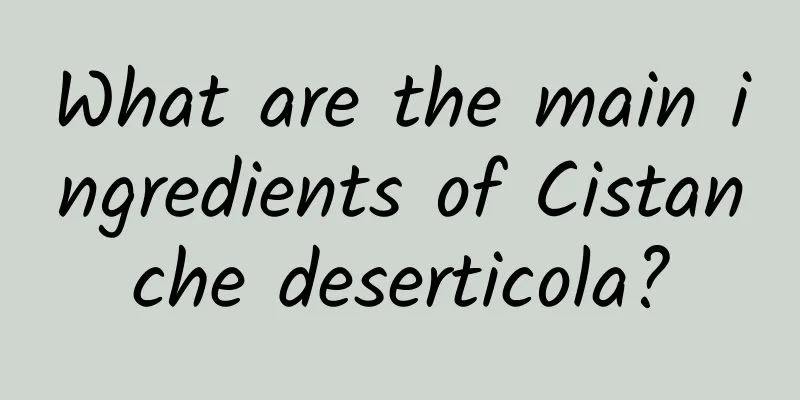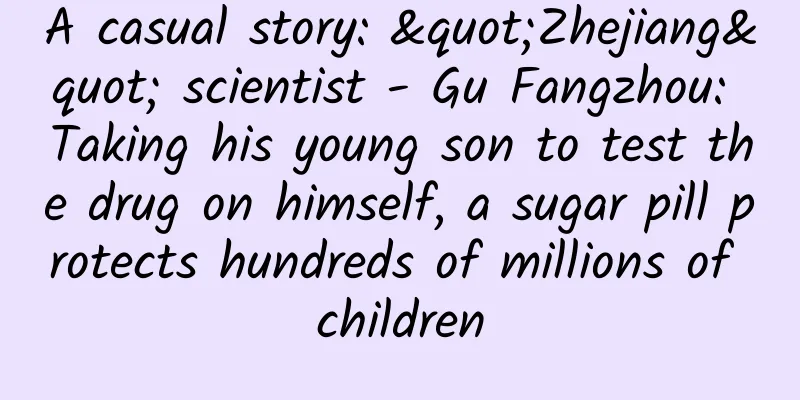What are the main ingredients of Cistanche deserticola?

|
There are many ingredients in every kind of food. Only by deeply understanding the nutritional components of food and knowing whether this food is good for health can we eat it correctly. So do you know what Cistanche deserticola is? What are the main ingredients of Cistanche deserticola? Why do so many people like to eat Cistanche deserticola? In fact, Cistanche deserticola is very nutritious. Let me briefly introduce you to the knowledge of Cistanche deserticola. What are the main ingredients of Cistanche deserticola? Cistanche deserticola Ma (scientific name: Cistanche deserticola Ma), also known as Xinjiang Yun, Cun Yun, Cistanche, and Chagan Gaoya (Mongolian), is an endangered species. Tall herbs, 40-160 cm tall, mostly underground. The flowering period is from May to June, and the fruiting period is from June to August. It is mainly produced in Xinjiang and Alxa League of Inner Mongolia, and is also distributed in Gansu and Ningxia. Cistanche deserticola is a parasitic plant that lives on the roots of the desert tree Haloxylon ammodendron, absorbing nutrients and water from its host. It is known as the "desert ginseng" and has extremely high medicinal value. It is a traditional precious Chinese medicinal material. In history, Cistanche deserticola has been regarded as a precious tribute to the imperial court by the Western Regions. It is also one of the most frequently used tonic medicines in kidney-tonifying and yang-strengthening prescriptions throughout the ages. Every April, Cistanche and Cynomorium songaricum enter their peak growth period, which is also the peak period for illegal digging and mining by lawbreakers. Driven by economic interests, some lawbreakers even do not hesitate to obstruct law enforcement and come into direct conflict with law enforcement officers. The stem is unbranched or has 2-4 branches from the base, with a diameter of 5-10(-15) cm at the lower part, gradually becoming thinner upwards to 2-5 cm in diameter. The leaves are broadly ovate or triangular-ovate, 0.5-1.5 cm long and 1-2 cm wide, densely grown at the bottom of the stem and sparsely and narrowly grown at the top, lanceolate or narrowly lanceolate, 2-4 cm long and 0.5-1 cm wide, glabrous on both sides. Inflorescence spike-shaped, 15-50 cm long, 4-7 cm in diameter; the lower half or all of the bracts of the inflorescence are longer, equal to or slightly longer than the corolla, ovate-lanceolate, lanceolate or linear-lanceolate, together with the bracteoles and corolla lobes, sparsely pubescent or nearly glabrous on the outside and edges; there are 2 bracteoles, ovate-lanceolate or lanceolate, equal to or slightly longer than the calyx. The calyx is bell-shaped, 1-1.5 cm long, with 5 shallow lobes at the top, and the lobes are nearly round, 2.5-4 mm long and 3-5 mm wide. The corolla is tubular and bell-shaped, 3-4 cm long, with 5 lobes at the apex. The lobes are nearly semicircular, 4-6 mm long, 0.6-1 cm wide, and the edges are often slightly rolled outward. The color varies, from light yellowish white or lavender, and often turns brown after drying. There are 4 stamens, and the filaments are inserted 5-6 mm from the base of the tube, 1.5-2.5 cm long, with wrinkled and long soft hairs at the base. The anthers are long ovate, 3.5-4.5 mm long, densely covered with long soft hairs, and have a cusp at the base. The ovary is oval, about 1 cm long, with nectar glands at the base. The style is slightly longer than the stamens, glabrous, and the stigma is nearly spherical. The capsule is ovoid, 1.5-2.7 cm long and 1.3-1.4 cm in diameter, with a persistent style at the top and 2-petal dehiscence. The seeds are elliptical or nearly ovate, about 0.6-1 mm long, reticulate and shiny on the outside. The flowering period is from May to June, and the fruiting period is from June to August. The above gives you a detailed introduction to the main ingredients of Cistanche. In fact, there are many ingredients in it. Only by paying attention to the nutritional composition of Cistanche can you know what kind of substance Cistanche is. At present, eating such Cistanche is beneficial to kidney tonification and has good health care effects, because the ingredients in it are very rich and nutritious. |
<<: What are the ways to consume Cistanche deserticola powder?
>>: What are the recipes for Cistanche deserticola?
Recommend
The efficacy and function of Artemisia scabra
Artemisia snow globulus is a traditional Chinese ...
The efficacy and function of plum
Plum is a medicinal material. If we have some und...
The efficacy and function of bitter melon seeds [picture]
There are many common Chinese medicinal materials...
The difference between calamus and calamus
Although the name of Acorus calamus differs by on...
The efficacy and function of Sclerocarpus sclerophylla
Chinese medicinal materials are very effective in...
What are the effects of Lingzhi and Astragalus?
Everyone knows what Lingzhi is, but do you know w...
Even without the "banana fan", Wukong can still cross the Flaming Mountain丨Tutushidao
Vocabulary Electromagnetic Railgun monitoring dro...
Why do nutrition experts recommend you to eat this kind of food with "high calorie content"?
Cheese, cheese, yogurt... these foods you have ea...
European Central Bank: Eurozone Consumer Payments Report
The European Central Bank has released its “Euro ...
Gail van der, who foresaw a story that had not yet ended
“Mathematics is part of culture, just like music,...
Can Cynomorium really enhance sexual function?
As living standards continue to improve, more and...
Weekly Science and Technology Talk丨"Forest Rangers" Flying in the Sky? See how satellites "protect" forests!
The 2022 China Land Greening Status Bulletin rele...
It must have an unknown side to it that flutters in the wind
Willow leaf: Willow leaf has the effects of clear...
Can eating onions, fungus, and drinking vinegar "soften blood vessels"? These cognitive misunderstandings need to be understood
We often hear people say that eating certain food...
Effects and functions of Aconitum kusnezoffii leaves
We know that there are many kinds of Chinese medi...









